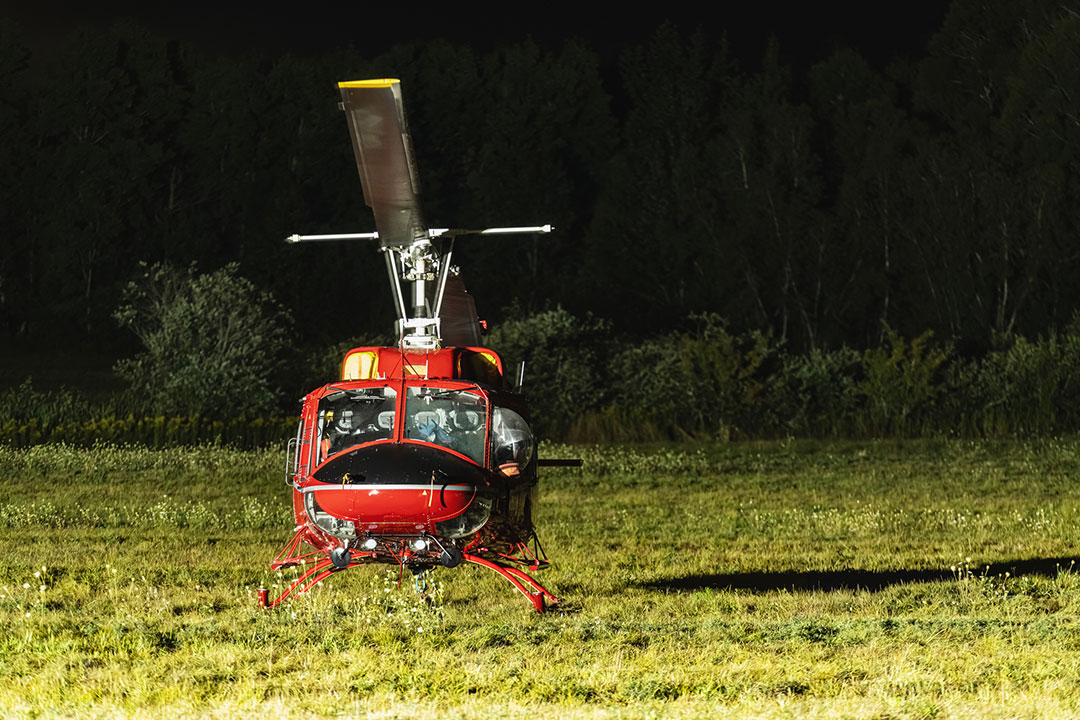Wildfire helicopter crew avoids critical injuries during a forced landing near Pemberton, B.C., a successful outcome that highlights the critical importance of training and preparation. The incident occurred on the morning of September 3, 2025, when a BC Wildfire Service helicopter carrying an initial attack crew was compelled to land in a forested area south of the community.
Immediately after the aircraft was on the ground, the highly trained crew shifted from fire suppression to emergency response. They quickly accounted for all personnel, applied medical triage including checking for spinal injuries, and secured the site. Radios were switched from attack frequencies to medical channels as the crew coordinated extraction plans and other aircraft were directed to safe corridors away from the smoke rising from the slopes of Mount Currie.
On-Scene Action

A Wildfire Helicopter battles a blaze with a Bambi bucket
Officials, including B.C. Forests Minister Ravi Parmar, confirmed that all occupants were located and evaluated, with no critical injuries reported. Emergency access was prioritized, with roads around Airport Road kept clear for responders. The crew had been responding to a newly detected wildfire, one of several ignitions in the area that day, underscoring the high operational tempo.
The aircraft was transporting an initial attack crew, also known as a helitack team. These specialized firefighters are designed for speed and agility, tasked with being the first response to a new wildfire. Their role involves assessing fire behavior, beginning containment line construction with hand tools, and relaying critical information back to command.
Inside the Emergency

A firefighting helicopter sits at a landing area.
In aviation, a forced landing is an unplanned landing necessitated by circumstances that eliminate normal flight options. In the demanding environment of aerial firefighting, contributing factors can include partial power loss, performance limitations caused by high temperatures and altitude (density altitude), rapidly changing winds, smoke-obscured visibility, and treacherous terrain that offers few safe landing options.
The Transportation Safety Board of Canada (TSB) was notified of the incident, initiating a standard process to determine the level of investigation required. This could involve reviewing maintenance records, flight data, crew statements, and weather conditions to understand the cause and contribute to future safety.
Operational Hazards in Mountain Flying

Upper Joffre Lake in Pemberton, BC, Canada
The forced landing near Pemberton brings several technical aviation challenges into sharp focus. The Sea to Sky corridor is known for its steep, complex terrain and unpredictable winds.
- Density Altitude: High heat and elevation reduce rotorcraft performance, demanding more power for basic maneuvers.
- Wind and Turbulence: Proximity to ridgelines creates hazardous wind patterns, while smoke can obscure vital terrain features.
- Payload Management: The weight of crews, tools, and gear tightens performance margins, making conservative planning essential.
- Landing Site Scarcity: Pre identified emergency landing zones and quick decision making skills are critical for a survivable outcome.
A Testament to Preparation
The successful outcome of this forced landing is a testament to the skill and preparation of wildfire aviation crews. It serves as a powerful reminder that this high risk work never becomes routine.
The procedures practiced in training, from the first headcount after landing to the precise coordination of emergency response, are what ensure that when a crisis occurs, crews can return home safely. This incident underscores the ongoing commitment to safety required to protect those who work on the front lines of wildfires.
